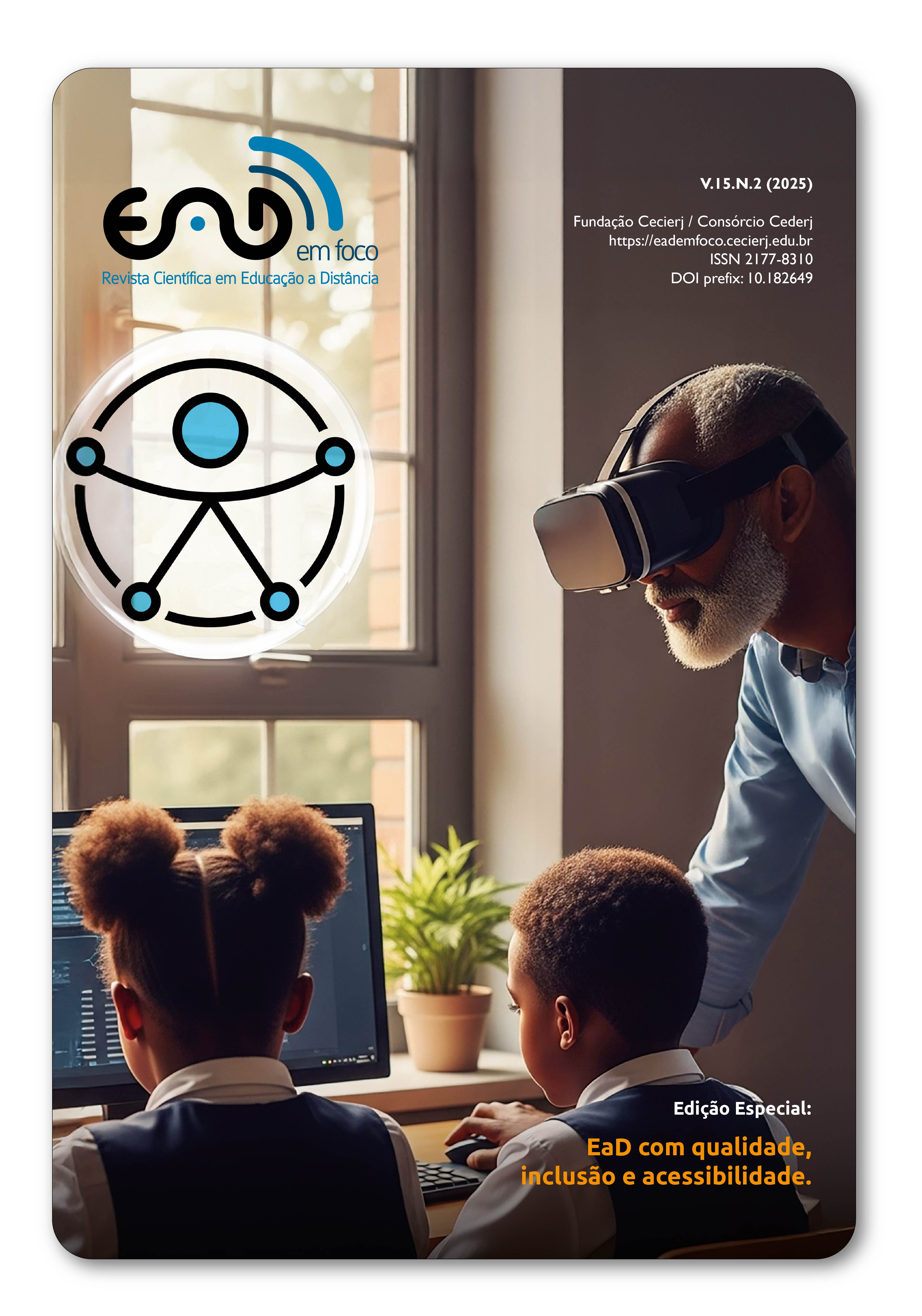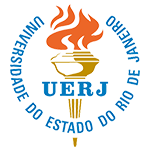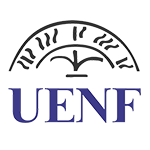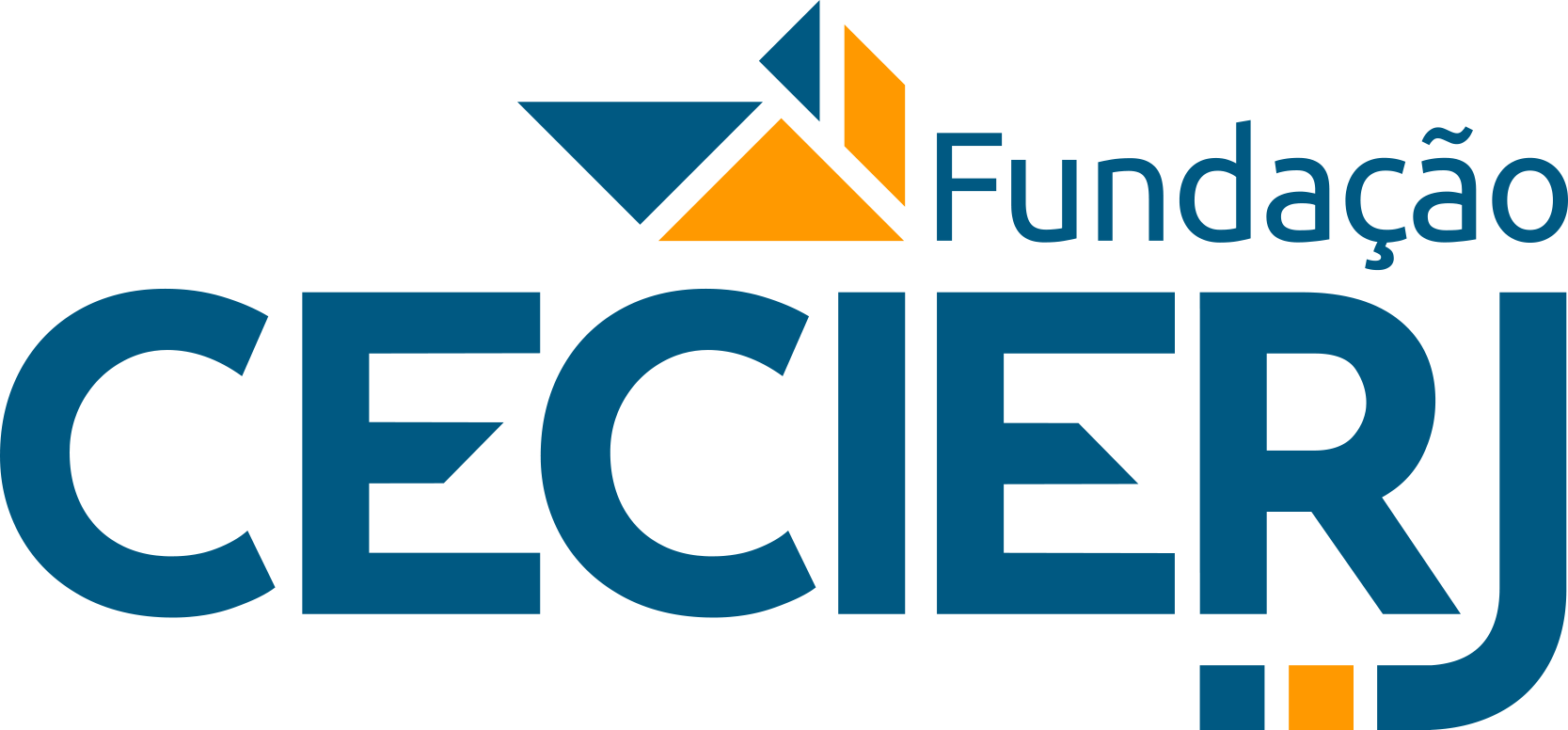Virtual Learning of Spatial Euclidean Geometry Concepts: Reflections on Remote Teaching and Technological Mediation
DOI:
https://doi.org/10.18264/eadf.v15i2.2584Keywords:
Online Education, Virtual learning, Distance education, Mathematics education, Online education, Euclidean Spatial GeometryAbstract
We live in a world where our daily actions increasingly involve digital technologies (DT). Based on qualitative research in which students interacted with digital media in a remote learning environment focused on Euclidean Solid Geometry (ESG), we identified a teaching and learning approach, which we termed Virtual Learning (VL). This article aims to describe and reflect on the VL proposal, developed from a remote teaching experience in Euclidean Solid Geometry, highlighting its distinctive elements and potential applications in teacher training for distance learning courses. The results indicate that VL is characterized by a combination ofsynchronous and asynchronous interactions, diverse use of digital media, encouragement of collaboration and student agency, as well as flexible assessment strategies. This approach overcame limitations of Remote Teaching (RT), moving closer to a hybrid model that fosters meaningful learning and the collective construction of knowledge. We conclude that VL has the potential to be applied in online courses and disciplines, especially in initial and continuing teacher education, contributing to the improvement of Distance Education (DE) in Brazil.
Keywords: Virtual learning. Euclidean spatial geometry. Online education. Distance education.
Mathematics education.
Downloads
References
BAIER, C.; BICUDO, M. A. V. O espaço do saber matemático: reflexões sobre a formação do professor. Educação Matemática Pesquisa, São Paulo, v. 15, n. 3, p. 575–592, 2013.
BORBA, M. C.; VILLARREAL, M. Humans-with-media and the reorganization of mathematical thinking. New York: Springer, 2005.
BRASIL. Decreto n° 9.057, de 25 de maio de 2017. Regulamenta o art. 80 da Lei nº 9.394, de 20 de dezembro de 1996, que estabelece as diretrizes e bases da educação nacional. Disponível em: http://www.planalto.gov.br/ccivil_03/_ato20152018/2017/decreto/D9057.htm - Acesso em 21 jul. 2024.
COBB, P. et al. Designing experiments in educational research. Educational Researcher, v. 32; n. 1, p. 9-13, 2003.
GRAVEMEIGER, K., COBB, P. Design research from the learning design perspective. In: PLOMP, T.; NIEVEEN, N. (Eds.). Educational design research, Part A: An introduction (p. 72-113). Enschede: SLO, 2013.
HODGES, C. et al. The difference between emergency remote teaching and online learning. EDUCAUSE Review, 2020. Disponível em: https://er.educause.edu/articles/2020/3/the-difference-between-emergency-remote-teaching-and-online-learning - Acesso em: 5 abr. 2025.
LEITE, A. F.; LIMA, D. C.; CARVALHO, A. M. Mídias sociais e aprendizagem: uma análise sobre a utilização do WhatsApp em ambiente educacional. Revista Ibero-Americana de Estudos em Educação, v. 15, n. esp. 1, p. 5–22, 2020.
LÉVY, P. O que é o virtual? São Paulo: Editora 34, 1996. 157 p.
LÉVY, P. Cibercultura. São Paulo: Editora 34, 1999.
LÉVY, P. Ciberespaço: um hipertexto com Pierre Lévy. Porto Alegre: Artes e Ofícios, 2000. 250 p.
LÉVY, P. As tecnologias da inteligência: o futuro do pensamento na era da informática. São Paulo: Editora 34, 2015.
SANTOS, E. M. Educação a distância: fundamentos, políticas e práticas. Revista Brasileira de Educação, v. 14, n. 42, p. 5661–5676, 2009.
SAVIANI, D. Ensino remoto e suas implicações. Revista Educação em Debate, v. 42, n. esp., p. 3–9, 2020.
Downloads
Published
How to Cite
Issue
Section
License
Copyright (c) 2025 EaD em Foco

This work is licensed under a Creative Commons Attribution 4.0 International License.
All articles published in Revista EaD em Foco receive the license
Creative Commons - Atribuição 4.0 Internacional (CC BY 4.0).
All subsequent publications, complete or partial, must be made with the acknowledgment, in citations, of the Revista EaD em Foco as the original editor of the article.













